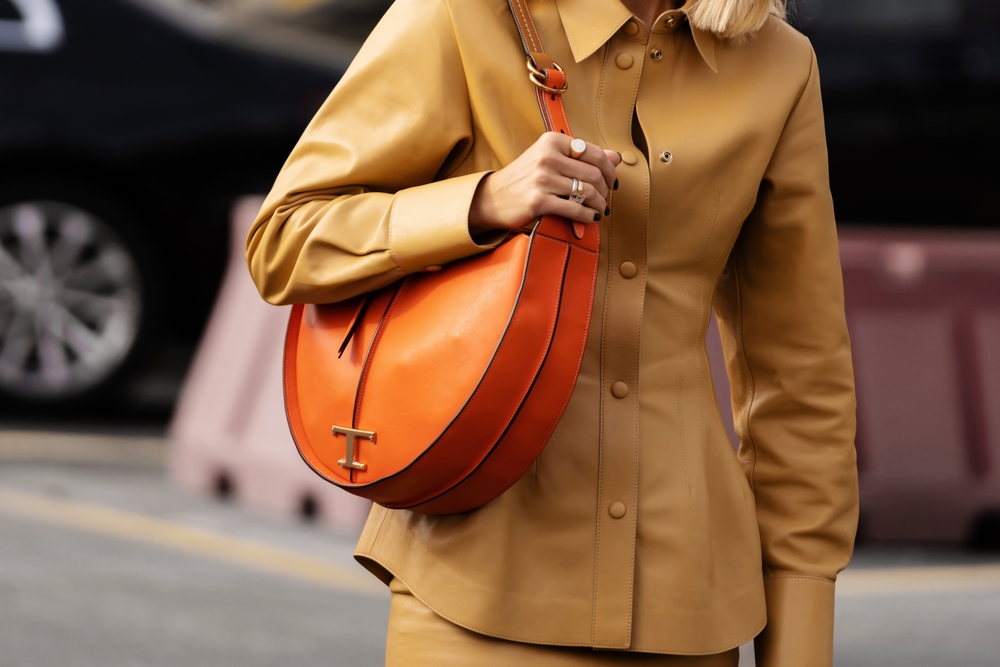How Handbags Have Evolved and Their Different Styles
Handbags come in many shapes, sizes, and materials. This article explains the different styles, how they are made, and the ways people have used them over time. Learn how to recognize classic designs, explore materials, and see what makes each handbag unique and practical.

What Makes Handbags for Women Essential Accessories
Women’s handbags serve multiple purposes beyond simple storage, functioning as extensions of personal identity and practical tools for daily life. The modern woman requires a bag that accommodates smartphones, wallets, cosmetics, keys, and various personal items while complementing her outfit and lifestyle. Contemporary handbags for women feature thoughtful compartmentalization, security features like zippers and magnetic closures, and ergonomic designs that distribute weight evenly. The psychological aspect of handbag ownership also plays a significant role, as these accessories often boost confidence and provide a sense of preparedness for various situations throughout the day.
How Designer Handbags Shape Fashion Trends
Designer handbags influence global fashion trends and establish benchmarks for quality, craftsmanship, and style innovation. Luxury fashion houses like Chanel, Louis Vuitton, Hermès, and Prada create iconic designs that often become timeless classics, inspiring countless interpretations across different price points. These designer pieces typically feature premium materials, meticulous construction techniques, and distinctive design elements that justify their premium positioning. The influence of designer handbags extends beyond luxury markets, as their innovative features, color palettes, and silhouettes often trickle down to mass-market brands, making high-fashion aesthetics accessible to broader audiences.
Why Leather Handbags Remain Popular Choices
Leather handbags continue to dominate the market due to their durability, versatility, and ability to develop character over time. Quality leather ages gracefully, often becoming more attractive with use as it develops a natural patina that reflects the owner’s lifestyle. Different leather types offer varying benefits: full-grain leather provides maximum durability and luxury feel, while top-grain leather offers a balance of quality and affordability. Leather’s natural properties make it resistant to wear and tear, while its classic appearance ensures compatibility with both casual and formal attire. Modern leather processing techniques have also improved sustainability and reduced environmental impact compared to historical methods.
When Crossbody Handbags Became Essential
Crossbody handbags gained prominence as women’s lifestyles became more active and mobile, requiring hands-free convenience without sacrificing style. These bags distribute weight across the body rather than concentrating it on one shoulder, reducing strain during extended wear. The crossbody style became particularly popular with the rise of urban commuting, travel culture, and active lifestyles that demand practical accessories. Modern crossbody designs incorporate adjustable straps, multiple compartments, and security features like RFID blocking and hidden pockets. The versatility of crossbody bags allows them to transition seamlessly from day to night, casual to professional settings.
How Tote Handbags Accommodate Modern Lifestyles
Tote handbags evolved to meet the demands of contemporary women who need spacious, versatile bags for work, travel, and daily activities. The open-top design provides easy access to contents while offering generous capacity for laptops, documents, gym clothes, or shopping items. Modern tote handbags feature reinforced bottoms, structured sides, and interior organization systems that prevent the bag from becoming a chaotic void. Quality totes incorporate sturdy handles designed to bear significant weight, while maintaining an elegant silhouette that works in professional environments. The adaptability of tote designs has led to specialized versions for specific activities like beach outings, grocery shopping, or business travel.
| Handbag Style | Price Range | Key Features | Occasions |
|---|---|---|---|
| Designer Leather Tote | $800-$3,000+ | Premium materials, brand prestige, lifetime durability | Business, formal events, luxury occasions |
| Mid-Range Crossbody | $150-$500 | Adjustable straps, multiple compartments, quality hardware | Daily wear, travel, casual outings |
| Affordable Leather Handbag | $50-$200 | Genuine leather, basic compartments, standard hardware | Everyday use, budget-conscious shopping |
| Luxury Crossbody | $600-$2,000+ | Designer branding, premium leather, security features | Professional settings, upscale casual |
| Canvas Tote | $25-$150 | Lightweight, washable, eco-friendly options | Shopping, beach, casual everyday use |
Prices, rates, or cost estimates mentioned in this article are based on the latest available information but may change over time. Independent research is advised before making financial decisions.
The Future of Handbag Design and Innovation
Contemporary handbag design continues evolving through technological integration, sustainable materials, and changing consumer preferences. Smart handbags now incorporate charging capabilities, GPS tracking, and LED lighting systems that enhance functionality for tech-savvy users. Sustainable fashion movements have prompted designers to explore eco-friendly alternatives like recycled materials, vegan leather, and biodegradable components without compromising style or durability. Customization options have expanded through digital platforms that allow consumers to personalize colors, hardware, monogramming, and interior configurations. The growing emphasis on versatility has led to convertible designs that transform from backpacks to totes or crossbody bags, maximizing value for consumers who prefer fewer, more adaptable accessories.
The evolution of handbags reflects broader changes in women’s roles, technology, and fashion consciousness. From medieval pouches to contemporary smart bags, these accessories continue adapting to meet emerging needs while maintaining their fundamental purpose of combining functionality with personal expression. Understanding different handbag styles, materials, and features empowers consumers to make choices that align with their lifestyles, budgets, and aesthetic preferences. As fashion continues evolving, handbags will undoubtedly remain essential accessories that balance practical necessity with personal style, continuing their centuries-long journey of adaptation and innovation.




